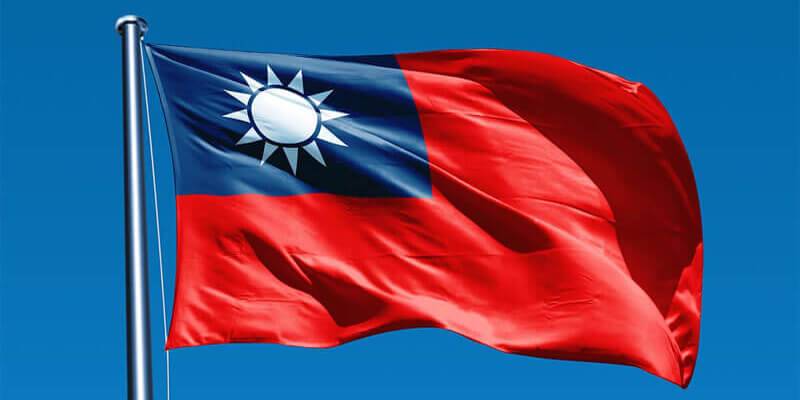Table of Contents
The flag of Taiwan represents Taiwanese patriotism with a white sunset over a blue field. It’s a symbol of cultural and historical significance in a country without its own state.
There’s a complex tension between mainland Chinese and Taiwanese residents regarding Taiwan’s status. China sees Taiwan as part of the People’s Republic of China. The flag’s different colors reflect the debate over whether Taiwan and other islands are part of China or separate states.
- Morocco Flag – Colors, Meaning & History in Detail
- Jordan Flag – Colours, Meaning & History in Detail
Flag of Taiwan – Colours, Meaning, History ??

History of the Flag of Taiwan
The Kuomintang (KMT) party adopted Taiwan’s flag in 1928 and moved to Taiwan under Chiang Kai-shek’s leadership after losing in 1949. It became Taiwan’s flag during Chiang’s exile. Mainland Chinese know the flag as the Republic of China’s flag, which the KMT has used since 1928. The design goes back to 1895, symbolizing the Chinese revolutionary army, and was changed by Sun Yat-Sen in 1906.
The Dutch, Spanish, Japanese, and Chinese have all ruled Taiwan at different times. Initially considered separate from Chinese civilization, political shifts gave Taiwan a Chinese identity. Sun Yat-Sen, a key figure in China and Taiwan’s history, founded the modern Kuomintang in 1914. Chiang Kai-shek took over and sought to free Taiwan from Japanese rule, backed by the US and UK’s Cairo Declaration. However, Japan’s occupation weakened Taiwan’s connection to China.
Taiwanese citizens resisted allegiance to China due to their long Japanese occupation, causing mainland Chinese mistrust. Despite being part of the Chinese empire before Japan’s invasion, mainlanders considered Taiwanese a minority. Taiwan developed its own identity separate from China after separating. The flag reflects Taiwan’s intricate history, acknowledging its Chinese roots while symbolizing a different future as an independent state.
What’s the significance behind the colors of the Taiwan Flag?
(A) Color
The flag has a red background with a blue square in the top left corner. Inside the blue square is a white sun framed by twelve triangles, symbolizing the sun’s rays and the twelve months in the Chinese calendar. These rays replaced an old time system and represent two hours of the current time. The red field signifies Qing Dynasty rebels’ sacrifice and holds cultural importance in China, symbolizing existence and unity.
People often describe Taiwan’s national flag as ‘the blue sky, white sun, and entirely red earth.’ The sun’s color symbolizes equality and democracy, while the flag’s red represents freedom and sacrifice. Red, white, and blue symbolize the nation’s core ideals: freedom, justice, democracy, fairness, and the brightness of life.
(B) Shape
The ‘Law About the National Flag and the Emblem of the Republic of China’ specifies the flag’s manufacturing process. The blue section’s width to length ratio is about 2:3. The sun, with its rays, is three-fourths the size of the blue area.
The sun’s diameter, without the rays, matches one-fourth of the canton’s width. The blue ring above the sun’s rays represents one-fifth of the sun’s diameter, making an angle of 30 degrees. Altogether, the twelve rays form a complete circle of 360 degrees.
Interesting Information about Taiwan’s Flag Flag of Taiwan
Taiwan, a semi-presidential country with around 23 million people, regards its flag with deep significance. However, debates over Taiwan’s independence limit its display in foreign events. The Democratic Progressive Party doesn’t recognize it, and its history with China leads to disputes over its use.
The Pan-Blue alliance raises it for political purposes. In the 1996 Atlanta Olympics, displaying the flag caused issues in China and Cambodia, leading to objections and arrests. The Taiwan flag means freedom for Taiwanese but recalls a shared past for Chinese.
If you know any other interesting facts about the flag of Taiwan? Share your thoughts as Comments.











